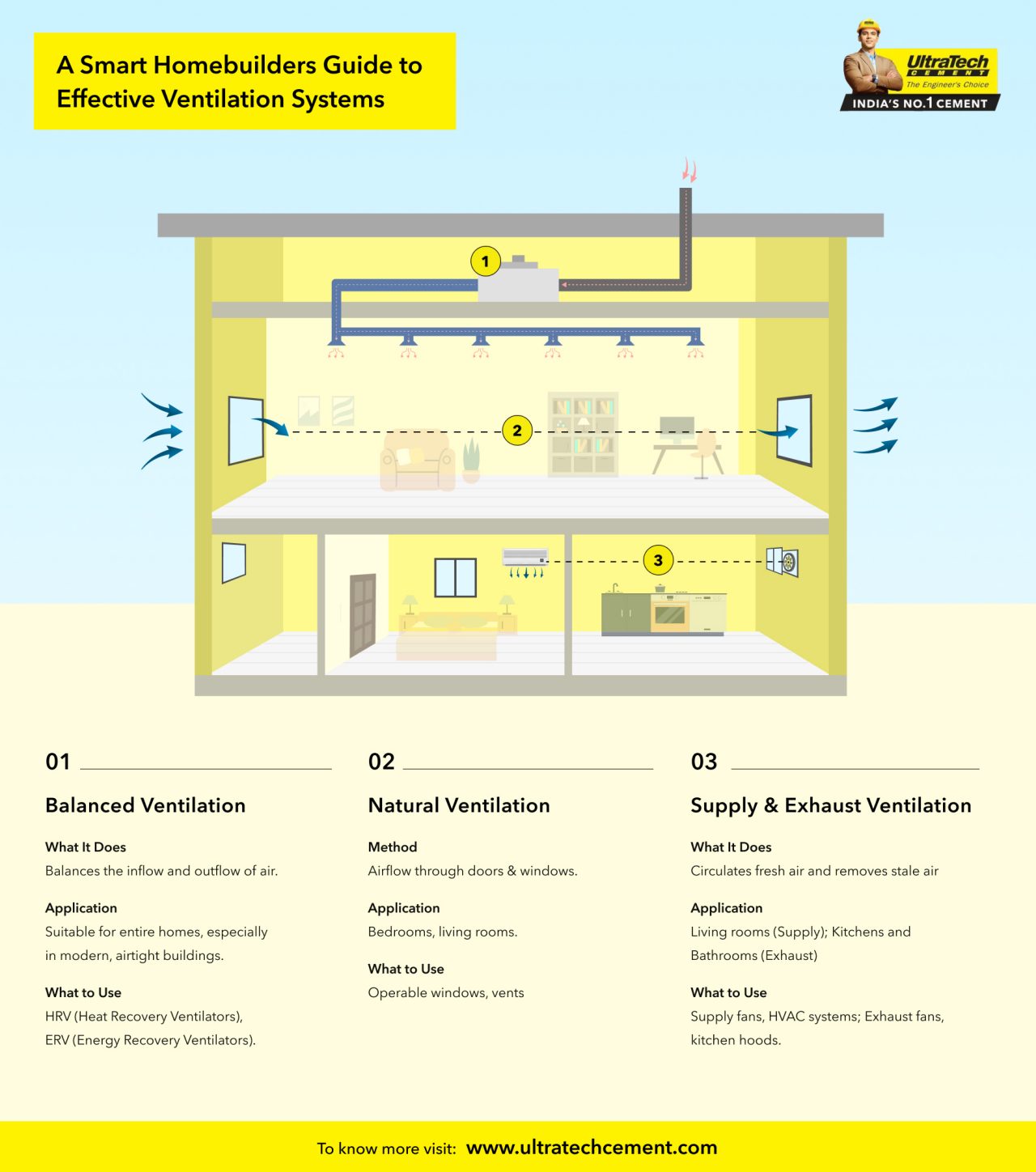Home Ventilation Melbourne: Essential Tips Every Homeowner Should Know
Understanding the Relevance of Home Air Flow for a Healthier Living Setting
Home ventilation plays a vital function in maintaining a healthy and balanced living atmosphere. It helps with the exchange of interior and outdoor air, which is very important for enhancing air top quality. Without appropriate air flow, homes can end up being reproducing grounds for toxins and irritants. The consequences of inadequate air flow can be substantial. This brings up the questions of exactly how home owners can effectively implement ventilation strategies to protect their health and wellness and health. Comprehending these approaches is important.

The Essentials of Home Ventilation
Home air flow functions as an essential part of interior air quality and convenience. It includes the procedure of trading stale interior air with fresh exterior air, consequently decreasing humidity and controlling temperature level. Proper ventilation systems can consist of natural techniques, such as open windows and vents, in addition to mechanical systems, such as exhaust followers and air exchangers. Efficient home air flow helps avoid concerns like indoor mold and mildew development and the accumulation of hazardous particles. It also enhances overall energy effectiveness, as well-ventilated areas can keep comfortable temperatures with less reliance on home heating and cooling down systems. Comprehending the basics of home air flow is vital for house owners seeking to create a healthier living atmosphere on their own and their families.

Common Sources of Indoor Air Air Pollution

Numerous might not recognize it, indoor air pollution can originate from numerous sources within a household. Typical contributors consist of unstable natural compounds (VOCs) released from paints, solvents, and cleaning products. Family devices, such as gas ranges and fireplaces, can launch harmful gases like carbon monoxide and nitrogen dioxide. Furthermore, mold and mildew and mold flourish in wet locations, launching spores that influence air top quality. Animal dander, allergen, and plant pollen can gather inside, more aggravating air pollution degrees. Cigarette smoking inside generates harmful chemicals that stick around in the air. Developing materials, including asbestos and formaldehyde, can off-gas hazardous compounds. Identifying these sources is crucial for keeping a healthier indoor atmosphere and advertising effective ventilation strategies.
Wellness Results of Poor Ventilation
Interior air pollution can have considerable health implications, specifically when ventilation is poor. Poor air flow can lead to the build-up of hazardous pollutants, such as unstable natural substances, mold and mildew, and particulate issue. This build-up may cause respiratory system issues, consisting of bronchial asthma, allergic reactions, and persistent obstructive lung condition. Individuals may experience signs like headaches, exhaustion, and irritation of the eyes, nose, and throat. Vulnerable populations, such as youngsters and the elderly, go to higher danger for extreme wellness impacts. Long-lasting direct exposure to poorly ventilated settings can likewise add to more significant problems, consisting of cardio illness. Ensuring correct air flow is essential for preserving a healthy living setting and lowering the threat of wellness complications connected with indoor air contamination.
Effective Ventilation Methods for Your Home
Proper air flow is important for preserving a healthy and balanced interior atmosphere, and applying reliable techniques can substantially improve air high quality. Homeowners can start by guaranteeing that exhaust followers are mounted in shower rooms and cooking areas to remove excess moisture and smells. Opening windows on a regular basis enables fresh air to flow, specifically during mild weather. Additionally, making use of air purifiers with HEPA filters can help record air-borne pollutants. For homes with home heating and cooling systems, preserving cooling and heating systems and changing filters frequently is important for peak efficiency. Including all-natural air flow strategies, such as cross-ventilation, can also enhance airflow. Securing any type of leaks in doors and windows stops undesirable drafts, which can interfere with regulated air flow, ultimately leading to improved interior air quality and convenience.
Preserving Optimal Air High Quality Year-Round
To preserve perfect air top quality year-round, homeowners need to take on an aggressive method to managing their interior setting. Routinely keeping track of indoor air high quality is crucial; this consists of monitoring for pollutants such as dust, mold, and unpredictable natural substances (VOCs) Applying efficient air flow systems, such as exhaust followers and air purifiers, can substantially reduce airborne pollutants. In addition, regular upkeep of a/c systems assurances peak efficiency and air blood circulation. Property owners ought to additionally take into consideration humidity degrees, as extreme moisture can lead to mold development. Seasonal adjustments might demand adjustments in air flow techniques to fit varying Home Ventilation Melbourne outdoor air quality. By prioritizing these practices, homeowners can create a healthier home, promoting general well-being for all passengers throughout the year.
Frequently Asked Questions
Just How Can I Tell if My Home Demands Much Better Air Flow?
To establish if a home calls for better air flow, one must observe signs such as consistent humidity, mold and mildew development, mildewy odors, condensation on windows, or raised allergy signs, indicating inadequate air movement and potentially inadequate interior air top quality.
What Are the Indications of Poor Indoor Air Top Quality?

Can Houseplants Improve Indoor Air High Quality Effectively?
The efficiency of houseplants in enhancing indoor air top quality is questioned. While some researches suggest they can take in toxins and generate oxygen, their general influence may be minimal contrasted to proper air flow and air purification systems.
How Often Should I Change My Air Filters?
The frequency of air filter changes commonly depends upon use and filter kind. Usually, it is suggested to change filters every three months, though houses with pet dogs or allergies may need more constant modifications for suitable performance.
Are There Any Kind Of Certain Air Flow Solutions for Allergic Reaction Sufferers?
Lots of ventilation systems, such as HEPA-filtered systems, effectively reduce irritants in the air. Home Ventilation Melbourne. These systems trap family pet, dust, and plant pollen dander, providing allergy patients with a cleaner, much healthier interior atmosphere while managing air top quality efficiently
It facilitates the exchange of indoor and outside air, which is vital for improving air high quality. Home air flow offers as a crucial component of indoor air top quality and comfort. It entails the process of exchanging stagnant indoor air with fresh exterior air, thus reducing humidity and controlling temperature. Indoor air contamination can have substantial health implications, especially when air flow is inadequate. Appropriate ventilation is essential for preserving a healthy and balanced indoor atmosphere, and executing efficient techniques can substantially boost air top quality.